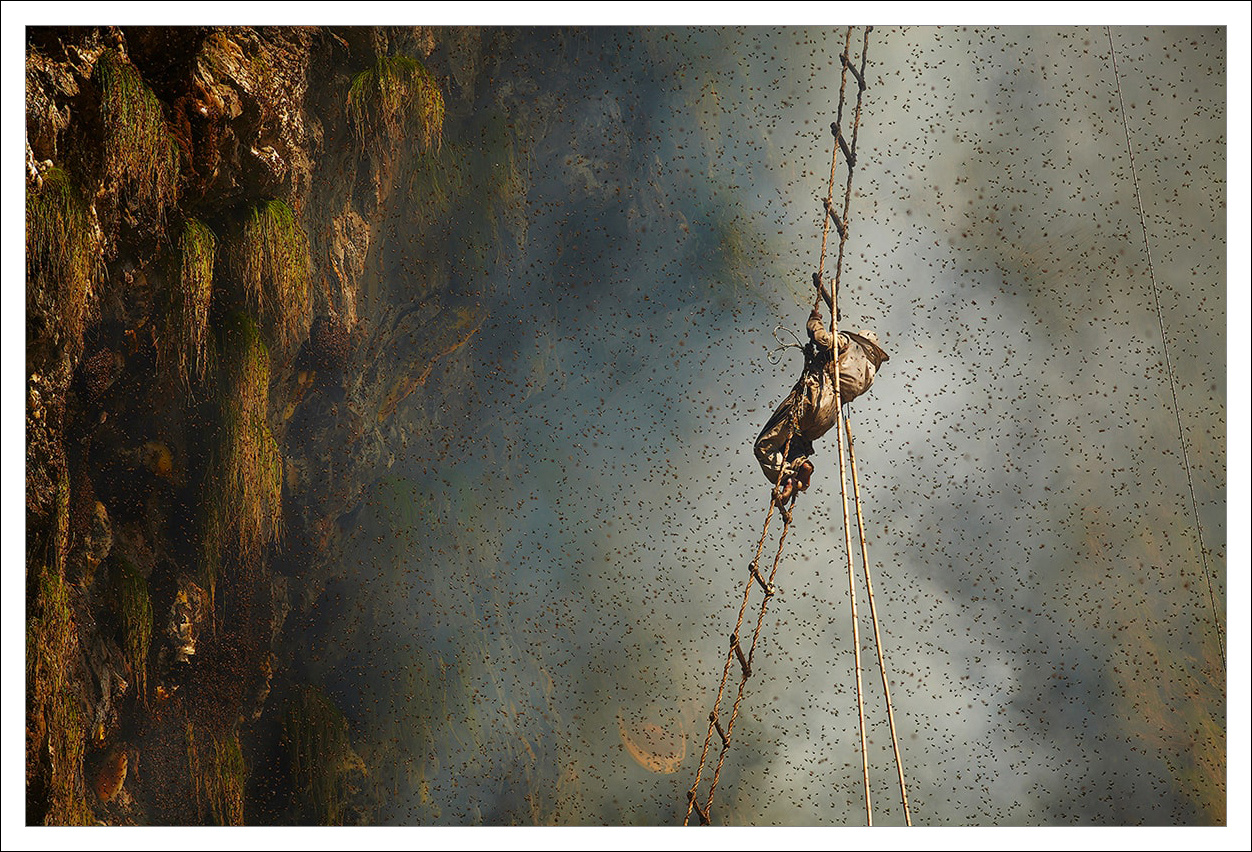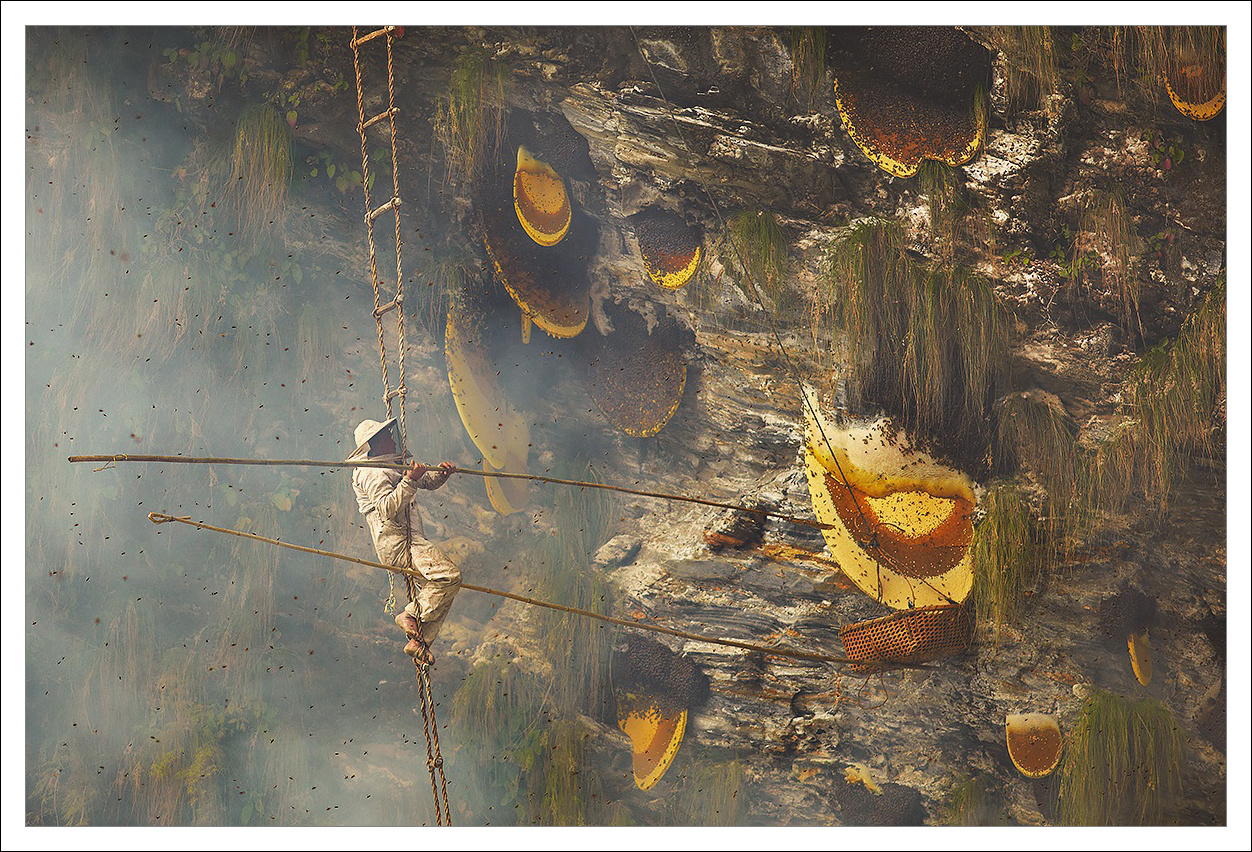A Lens on Survival: Photographer Andrew Newey Turns His Art into Advocacy for Bees

Photography by Andrew Newey
Photography has long served as a window into far-flung cultures, untold stories, and vanishing traditions. But for British travel and adventure photographer Andrew Newey, the camera is more than an artistic tool — it’s a vehicle for urgent environmental advocacy. This World Bee Day, observed annually on May 20th under the auspices of the United Nations, Newey is turning his celebrated lens toward a quiet yet catastrophic crisis: the global collapse of bee populations.
In collaboration with the World Wildlife Fund (WWF), Newey is donating 100% of the proceeds from a special sale of fine art prints from his acclaimed Honey Hunters of Nepal series. The three-week sale, which launched on World Bee Day, aligns with National Photo Month — a fitting convergence of ecological activism and visual storytelling.
“At the heart of this project is a species we all rely on but seldom truly see,” Newey said in a statement. “Bees are essential to life. Their role in maintaining biodiversity and ensuring global food security cannot be overstated. If my images can draw even a little more attention to their plight, then the work has served its purpose.”

The Threat to Pollinators
The UN’s designation of World Bee Day is not merely symbolic. Pollinators like bees are increasingly endangered by habitat destruction, pesticide use, unsustainable farming, climate change, and environmental pollution. Their disappearance would devastate the agricultural systems we depend on — over 75% of global food crops rely on pollination, including fruits, vegetables, nuts, and seeds.
Beyond the staggering statistics, the crisis carries deep personal meaning for many. As someone who manages a small apiary in rural Vermont, I have seen firsthand the eerie silence left behind when a hive collapses — the absence of hums, the stillness of flowers untouched.
Honey Hunters of Nepal: A Story of Risk and Reverence
Newey’s Honey Hunters of Nepal collection is not just visually arresting; it is a cultural and ecological time capsule. The series documents the age-old tradition of wild honey hunting practiced by the Gurung people of Nepal, who scale perilous Himalayan cliffs to harvest honey from the world’s largest species of honeybee, Apis laboriosa.
Photographed with respect and awe, the images capture more than action — they capture devotion, endurance, and the elemental connection between people and pollinators. The series has earned Newey global recognition, including honors from the Travel Photographer of the Year Awards, the International Photography Awards (IPA), and the Siena International Photography Awards (SIPA).
Each frame, bathed in natural light and framed by vertiginous cliffs, underscores the fragility not just of tradition, but of the ecosystems that sustain them.
Art for Action

In donating the full proceeds from this sale to WWF, Newey is using his global platform to amplify the message that bees are not just creatures of pastoral charm — they are the backbone of global agriculture and biodiversity. The funds raised will support WWF’s outreach and education efforts, aiming to awaken public consciousness to a crisis that too often goes unnoticed.
This is not a charity project in the usual sense. It’s a call to recognize the interdependence of art, tradition, and ecology — and to respond not just with admiration, but with action.
A Shared Responsibility
In a world inundated by fleeting digital images, Newey’s work stands as a testament to the power of considered, purposeful photography. His portraits of the honey hunters are reminders of what can still be preserved — and what may yet be lost.
By purchasing one of these limited-edition prints, supporters aren’t just acquiring a beautiful piece of art. They are investing in a future where bees, and the traditions that honor them, still have a place in our world.
For those wishing to browse or purchase the prints, visit Andrew Newey’s official website and navigate to the WWF collaboration page. Every photograph sold helps fund a fight that affects every plate, every farm, every flower.
In a time of environmental precarity, Newey’s lens doesn’t just document—it defends.
All images © Andrew Newey. Visit andrewnewey.com to explore more of his work.

![From Kathmandu to the World: How Excel Students Are Winning Big [Admission Open]](https://nepalaaja.com/img/70194/medium/excel-college-info-eng-nep-2342.jpg)
